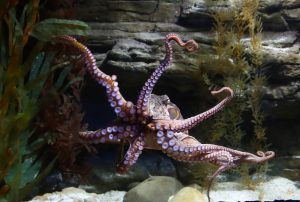A modern octopus uses a sharp ribbon of teeth called a radula on its tongue to drill a hole into thick-shelled prey — useful for when the shell is too tough for the octopus to pop apart with its suckers. The octopus then injects venom into the hole, paralyzing the prey and dissolving it a bit, which makes for easier eating. Octopus-drilled holes were previously found in shells dating to 50 million years ago, but the new find suggests this drilling habit evolved a quarter million years earlier in their history.
